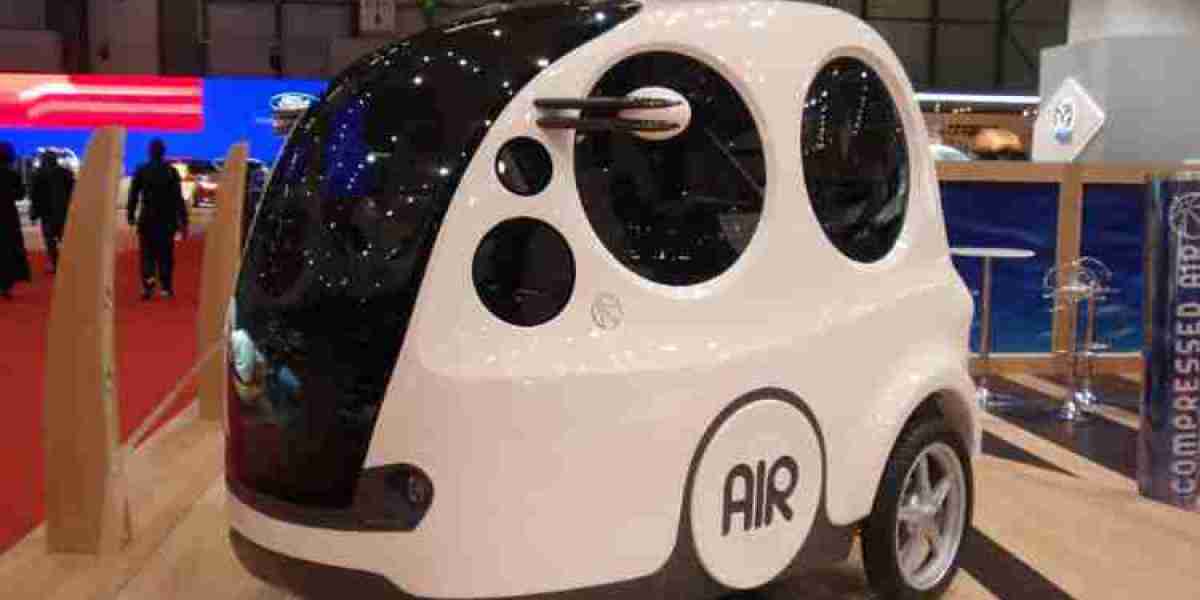The transportation sector has long been a cornerstone of modern society, facilitating the movement of goods and people across vast distances. However, with this convenience comes a significant environmental cost. Traditional modes of transportation, particularly those reliant on combustion engines, have been identified as major contributors to air pollution, greenhouse gas emissions, and climate change. In response to these challenges, innovative solutions are emerging, and among them, air powered vehicles are gaining attention for their potential to reduce emissions and mitigate environmental impact.
In 2023, the global air powered vehicle market size stood at a value of USD 517.97 million, with projections indicating robust growth at a Compound Annual Growth Rate (CAGR) of 24.8% through the forecast period of 2024-2032, reaching an estimated value of USD 3821.72 million by 2032. This growth trajectory underscores the increasing recognition of air powered vehicles as a viable alternative to conventional transportation options.
I. Overview of Air Powered Vehicles: At the heart of air powered vehicles lies a simple yet innovative concept: the utilization of compressed air as a clean and renewable energy source for propulsion. Unlike traditional combustion engine vehicles, which rely on fossil fuels and emit harmful pollutants, air powered vehicles produce zero tailpipe emissions during operation. This fundamental difference positions them as a promising solution to the environmental challenges plaguing the transportation sector.
The roots of air powered vehicles can be traced back to the 19th century, with various prototypes and experimental models surfacing over the years. However, it is in recent times that significant advancements have been made in the development and commercialization of these vehicles. Today, air powered vehicles are being explored as a viable alternative to both combustion engine vehicles and electric vehicles, offering advantages in terms of emissions reduction, energy efficiency, and sustainability.
II. Environmental Impact of Traditional Transportation: The environmental impact of traditional transportation cannot be overstated. Combustion engine vehicles, powered predominantly by gasoline or diesel fuel, emit a cocktail of harmful substances into the atmosphere, including carbon dioxide (CO2), nitrogen oxides (NOx), particulate matter (PM), and various other pollutants. These emissions contribute significantly to air pollution, smog formation, and climate change, posing serious risks to human health and the environment.
The combustion of fossil fuels releases carbon dioxide—a potent greenhouse gas—into the atmosphere, where it accumulates and contributes to the warming of the planet. In addition to climate change, transportation emissions are also associated with a range of health issues, including respiratory diseases, cardiovascular disorders, and premature mortality. The adverse effects of transportation emissions are particularly pronounced in urban areas, where high levels of vehicular traffic exacerbate pollution levels and impact public health.
III. Potential Benefits of Air Powered Vehicles: In contrast to their combustion engine counterparts, air powered vehicles offer a myriad of potential benefits for reducing emissions and mitigating environmental impact. By harnessing compressed air as a clean and renewable energy source, these vehicles produce zero tailpipe emissions during operation, thereby contributing significantly to improved air quality and reduced pollution levels.
Moreover, air powered vehicles boast a lower carbon footprint compared to traditional vehicles, as they do not rely on finite fossil fuels and emit minimal greenhouse gases. The use of compressed air as a propulsion technology further enhances their appeal, offering advantages in terms of energy efficiency, sustainability, and resource conservation. With growing concerns about climate change and environmental degradation, the adoption of air powered vehicles presents an opportunity to transition towards a more sustainable transportation system.
IV. Challenges and Limitations: Despite their potential benefits, air powered vehicles face several challenges and limitations that hinder their widespread adoption and commercialization. Chief among these challenges is the issue of energy efficiency. Compressed air, as a medium, exhibits lower energy density compared to conventional fuels, resulting in constraints on range and performance for air powered vehicles.
Furthermore, the infrastructure requirements for air powered vehicles pose logistical and economic hurdles for implementation. Establishing specialized refueling stations and distribution networks presents significant challenges, particularly in regions where infrastructure development is lacking. Technological limitations, such as the need for advancements in lightweight materials, energy storage systems, and propulsion technologies, also require attention to enhance the performance and viability of air powered vehicles.
Additionally, regulatory and policy challenges, including the lack of incentives and supportive policies for air powered vehicle adoption, impede investment and innovation in the sector. Without adequate support from governments and policymakers, the transition to air powered vehicles may face significant hurdles, hindering progress towards a more sustainable transportation system.
V. Case Studies and Success Stories: Despite the challenges, several success stories and instances of successful implementation and adoption of air powered vehicles have emerged across the globe. These case studies serve as inspiring examples of the potential of air powered vehicles to address transportation challenges and foster sustainable mobility in diverse contexts.
For instance, in France, the AirPod—a compact and lightweight urban vehicle powered by compressed air—has been engineered for short-distance commuting and urban mobility. Its innovative design and zero-emission operation make it an attractive option for environmentally conscious consumers. Similarly, in India, the Tata Motors Group has pioneered the development of the Tata Air Car, a compressed air vehicle prototype that promises low-cost and environmentally friendly transportation solutions for urban and rural areas alike.
VI. Innovation and Future Outlook: Looking towards the future, continued research and innovation stand as linchpins in the quest to advance air powered vehicle technology and surmount existing challenges. Emerging technologies, such as advanced energy storage systems, lightweight materials, and regenerative braking systems, hold promise for enhancing the performance and efficiency of air powered vehicles.
Furthermore, the integration of air powered vehicles with renewable energy sources, including solar and wind power, holds potential to further bolster their sustainability and environmental benefits. Market trends and growth projections paint a positive outlook for the air powered vehicle market, with increasing investment and interest from industry stakeholders, policymakers, and consumers alike, serving as harbingers of a cleaner, greener future.








